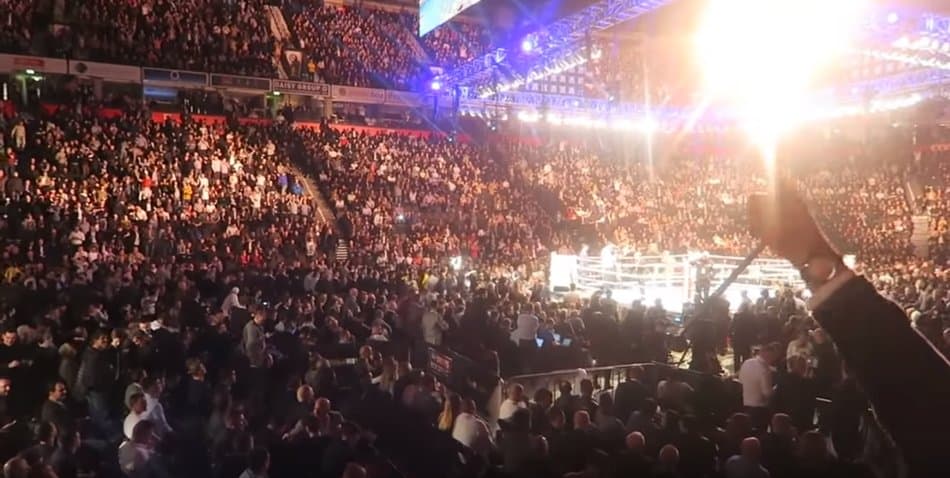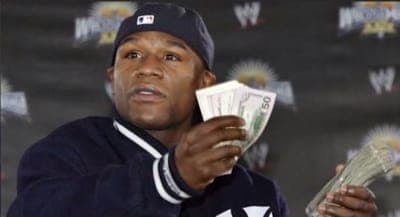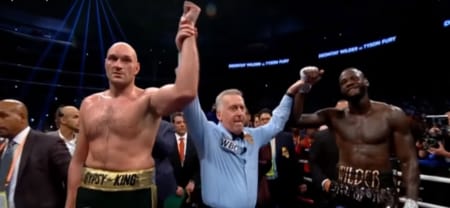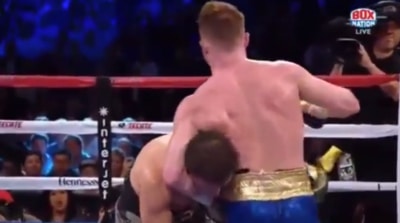
Watching a boxing match on pay-per-view is a unique experience. The first pay-per-view event streamed through the cable into people’s homes was a boxing match, and the popularity of the service grew with the popularity of boxing in the ‘70s and beyond.
Why is boxing shown on pay-per-view? Boxing is shown on pay-per-view because large popular fights are rare compared to other sports. The rarity of high profile fights doesn’t make sense for subscription services so cable providers and promoters decided they could make more money offering these one-time-payment deals.
In fact the story of pay-per-view goes hand-in-hand with boxing, although the service is split between boxing and MMA today and losing some market share to rising online services.
The History of Pay-per-view
Pay-Per-View (PPV) got its start in the early 1950s as closed-circuit theater television where viewers could watch fights in a theater setting rather than in person or their homes. This was the preferred service for watching boxing matches on a screen through the ‘70s.
Closed-circuit fights gained tremendous popularity in the ‘60s and ’70s when Muhammad Ali was prolific. In fact, the (first) Muhammad Ali vs. Joe Frasier fight aired live in 1971 and became the first fight to pass the 1 million buys mark by selling 2.5 million because it was the first to go world-wide.
The first in-home cable-provided PPV fight was Floyd Patterson vs. Ingemar Johanssen II in 1961. Although the PPV service failed to gain popularity in the ‘60s and ‘70s, it did begin to finally replace the closed-circuit theater television services in the 80s and remains the dominant service to watch fights today.
Its popularity in the ‘80s through the ‘00s was driven by the likes of HBO and Showtime in the U.S., and by Sky Box Office in the U.K. These services brought the fights into the homes of a worldwide audience and boxing hasn’t turned back since.
Today, PPV events are split between boxing and MMA most often. As MMA gains popularity with younger generations, boxing’s PPVs have declined. However, the most popular and talented boxers like Anthony Joshua, Manny Pacquiao, Floyd Mayweather, and Canelo Alvarez still pull in high revenues and PPV buys.
The Pay-Per-View model
Boxing (or combat sports in general) don’t follow the standard setups for seasons, playoffs, or tournaments like other popular sports in the world.
Big-name fights are sporadic and relatively rare in comparison to a monthly subscription service doesn’t make sense for service providers and their customers – boxing fans.
As an example, there were only 6 PPV boxing matches and 1 PPV MMA fight in 2018 (split between HBO, Showtime, BT Sports, Sky Box Office), whereas EACH team in Major League Baseball in the U.S. plays 162 games a year and there are 30 teams in the league.
These one-time events create a challenge for service providers to make money with standard service, so the PPV model makes a tremendous amount of sense. Especially when HBO can sell upwards of 1 million $50 buys for a single event (approximately 1% of their total revenue of 5.9 billion in 2016) and still charge people for a monthly subscription.
In addition, the time slots of boxing can vary as well, making it hard to fit into prime-time slots on network television.
Most sports grew up with the network television providers, so they naturally grew into the preferred time slots, e.g., Baseball in the U.S. and football (soccer) in Europe. Boxing can take place anywhere around the world, so the time slot is determined by location, not network preference.
Today ESPN, Fox and some online streaming services like DAZN are starting to air MMA and take some viewers away from traditional PPV services.
Boxing remains mostly on the standard PPV channels, which is causing some to think PPV is killing the sport.
Which brings me to the next topic.
Boxing is Losing Popularity, and Pay-Per-View May be Killing it
As much as we hate to see it, boxing is losing popularity in big markets like the U.S., U.K., and Russia to MMA.
Don’t get me wrong, the MMA is extremely entertaining, but for boxing fans, it is hard to accept the downslide of boxing’s prowess.
If you flip through channels, MMA can be found fairly easily with repeat airings of fights, reality television competitions, and more. It is everywhere, and boxing hasn’t been able to keep up.
Bleacher Report wrote an interesting opinion piece on this in 2012. To take some of that and add to it, PPV is killing fights because:
- Big names, boring fights
Think back to Mike Tyson vs. Evander Holyfield II (“The Bite”) where the fight ended in the 3rd round and left viewers unsatisfied and angry that they paid the $50 price.
Or the Floyd Mayweather vs. Manny Pacquiao fight in 2015 that brought in close to 5 million PPV buys and was highly entertaining to die-hard boxing fans watching Mayweather’s flawless execution from the outside. But to the average fan, it was “boring” because there weren’t any dazzling moments.
- Overpriced
To pay around $100 to watch an uneventful fight between Mayweather and Pacquiao isn’t worth it to the lesser boxing fans. It is a tough pill to swallow for most when you don’t exactly know what you are going to get.
Boxing matches can range anywhere between $5 and $100 for the highest profile fights. At $5 you are getting relatively unknown fighters, and for $100 you are getting Mayweather and McGregor stunt matches.
It is hard to justify the price for an individual, so people opt for pitching in to a money pool with friends or enjoying a few beers at a local bar showing the match.
- No organizing league or player’s union.
In boxing, there is the IBF, WBA, WBO, and WBC as the top four leagues with each recognizing the titles of each other.
MMA has the UFC as the dominant force in the sport, and it has made an effort to put fighters’ health as a top priority. We can’t exactly say the same for boxing.
- Failure to capture younger markets
Younger generations aren’t as excited by boxing and instead are drawn to MMA. The extremely technical boxing of Floyd Mayweather is boring because this generation likes fast-paced and exciting events.
They also have their lives online, and PPV isn’t a service that puts convenience first anymore.
PPV was born because of boxing, and it may now be killing boxing by failing to adapt to the next generations.
Conclusion
PPV was developed for boxing and gained popularity because of the sport. The revolutionary service option of one-time-buys was unique because of the sporadic nature of boxing.
For 50 years the two were inseparable until today when the internet and technology are rapidly changing the world.
In today’s internet-driven world, PPV has struggled to adapt and is getting beat by online services that do precisely what PPV was built to do – provide supreme customer service to combat sports fans.



